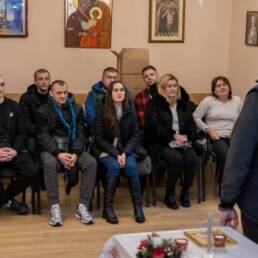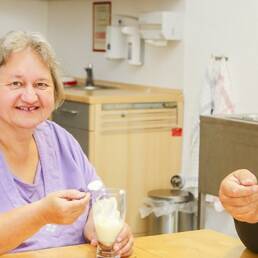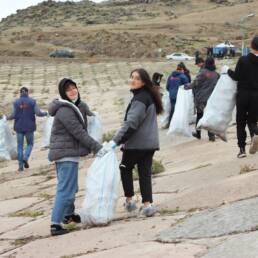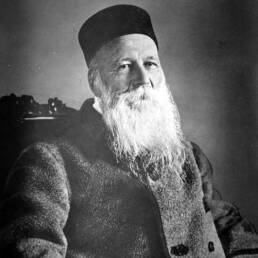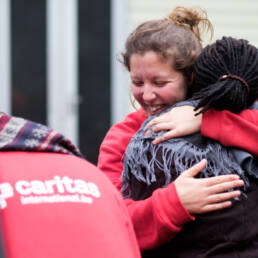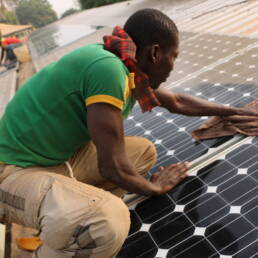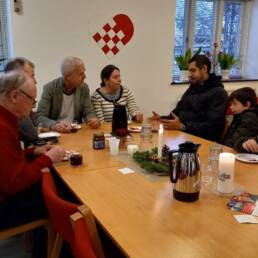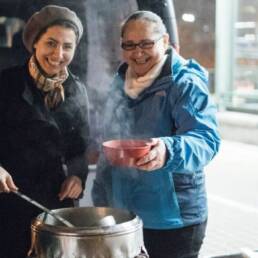Author
Pavel Chalupníček
Volunteer
Caritas Europa
The encyclical of Pope Francis ‘Laudato Si’ – On Care for Our Common Home’ has generated a lot of interest since its publication in 2015. Not just in academia (with more than 11 thousand articles published about it until now, according to Google Scholar), but, somewhat unusually for a Vatican document, it continues to trend on social media and in the news too.
Just in April 2019, there were on average three newspaper article published each day about Laudato Si’ in English (according to Google News). But that is not all. The goal of the encyclical was not only to stimulate reflection and dialogue on the topic of social and environmental justice, but also to motivate its readers to take concrete actions. That is why many groups and organisations have used Laudato Si’ as their inspiration and starting point of steps that are intended to bring visible changes at local level. And because – as Pope Francis repeatedly reminds us in the text – ‘everything is interconnected’, there is hope that these changes will stimulate greater transformation also on a larger scale.
This article looks at several initiatives that show how Laudato Si’ has been brought alive in parishes, informal groups, families, and in everyday life of people. Much thought, effort, and prayer went into each of these initiatives, and the results can inform and inspire anyone, anywhere. Because ‘Faith and Action’ is published English, I focus here mainly on materials available in this language. But that does not mean that there are no inspiring stories available in other languages too – if you would like to share yours, let us know at mhnyp@caritas.eu and we will be happy to add it on the list!
In Europe, Caritas Scotland (SCIAF) published a list of tips and ideas how to turn Laudto Si’ into action. Did you know that you can, for example, put together a green team in your parish and start supporting wild life in the parish’s yard, encourage others to home-grow their food, or organise swap shops to reduce the need to buy new products? The booklet also includes handy ideas how to save energy (and your money!) at home and reduce greenhouse gas emissions: wash your clothes at 30 degrees, turn down your heating thermostat, or opt for more efficient insulation if you renovate. Because a large part of our carbon footprint comes from travelling, you can have a look at the section which covers this topic, and consider switching from car to public transport or bike at least for one day a week, or car pool if you have to use a car. And if you can take a train, there is no need to fly. Another way to help the environment is to eat local and seasonable products (you can find a useful calendar showing when different kinds of vegetables are in season!), plan what you eat to reduce food waste, or – if you feel more radical – go meat free on Mondays and/or on Fridays. Check out also the section on Reduce – Reuse – Recycle scheme for all things you use: through keeping your clothes for longer, sharing tools you don’t need every day with your friends and neighbours, trying to fix things that are broken, shop in second-hand stores, or by preferring reusable or refillable products.
Caritas England and Wales (CAFOD) published an interim report (written by Augusto Zampini Davies) from a series of workshops on Laudato Si’ and development which took place in Bangladesh, Colombia, Ethiopia, Sierra Leone and the UK. The workshops used the same methodology which creates the backbone of the encyclical: See – Judge – Act – Celebrate. The report is unique in its depth and its international scope, and certainly worth reading, as it summarises the experience of people at the local level with issues and actions proposed by the encyclical. Despite considerable agreement between Laudato Si’ and the workshops’ participants, it also presents some areas where the grassroots experiences contrasted with the thoughts presented in the encyclical’s text. For example, in the area of technology, the participants were more optimistic about its role in sustainable development than Pope Francis, or in the political sphere, the participants tend to put more hope in civil society and bottom-up approaches, than in top-level politics. Urbanisation, while challenging for many people and the environment, was by many of them seen as offering many opportunities for sustainable development. Yet, when discussing the relationship between culture and nature, the participants felt Laudato Si’ did not pay enough attention to gender inequality and its consequences for sustainable development. There was an agreement about the ambiguous nature of economic activity in relation to the environment, but the participants differed in their approach to what can be done about it: participants from some countries, such as Colombia, preferred radical changes in the economy, while in other countries, such as Ethiopia, participants supported more gradual approach to changes.
Although the text was an interim report and its final version is not available yet, CAFOD continues to engage with Laudato Si’ in their actions, as documented by more recent document on relationships between Laudato Si’ and Sustainable Development Goals (available in English, French and Spanish).
In North America, the Archdiocese of Atlanta, in cooperation with the University of Georgia, prepared an Action Plan in 2015 (available in English and Spanish). Since then, the Action Plan has become a part of science and religion curriculum in all Catholic schools in the Archdiocese of Atlanta, and its parts have been adopted by several other archdioceses and dioceses in the United States and Australia, as well as some Protestant or Jewish organisations.
The Action Plan offers many suggestions how to put this encyclical into practice at the level of parishes, schools, homes, and workplaces. The chapters of the extensive Action Plan cover more than 50 pages and deal with areas such as:
- parish activities and education: invite guest speakers, create or expand your library, form ‘green teams’, or broaden curricula;
- energy conservation and efficiency: prepare and implement Energy Action Plan, focusing on areas such as heating/air-conditioning, use of lights and other electric appliances, insulation of buildings, install solar panels or solar water heater, plant native trees to shade your house, or line-dry your clothes etc.;
- purchasing and recycling: use reusable or recyclable plates and utensils, or those made from natural or recycled materials, switch to tap instead of bottled water etc.;
- transportation: carpool, consider suing electric or hybrid car, be mindful of your vacation travel carbon footprint, etc.;
- water conservation, which also saves energy used to produce clean water: repair leaks, fill washing machine and dishwasher fully before using it, minimise outside water use with water-wise landscaping or use rain water for watering, etc.;
- buying and sharing food: prefer local, organic, do not waste food, eat less meat, or try composting, etc.;
- creating sustainable landscapes: reduce lawn size, create wildlife corridors or a meditation garden, minimise use of chemicals, or plant trees, etc.;
- assisting climate vulnerable populations: identify elderly, young, poor, homeless or transient people who are more exposed to extreme heat or weather events, and find ways to help them;
- involving young people in implementing Laudato Si’: develop a school programme or competition, create a schoolyard habitat, offer environment-themed school trips, celebrate St. Francis day with children, etc. or;
- engaging in political advocacy and action: support political candidates and businesses who support the environment, lobby your elected representative, join or support environmental group, etc.
And finally, a handful summary of activities and initiatives inspired by Laudato Si’ at the global level can be found at the web of Global Catholic Climate Movement, a global network of more than 650 Catholic organisations, whose Eco-Parish guide is free to download (you only have to provide your e-mail address). Due to its global reach it contains concrete examples of positive change towards social and environmental justice from six continents: from monitoring and saving energy, and engaging parishioners, to ways addressing structural nature of social and environmental problems, such as faith-based advocacy and solidarity.
About the author
Pavel Chalupníček studied economics in Prague, Czech Republic, and theology in Leuven, Belgium. Currently he works as a volunteer for Caritas Europa Secretariat in Brussels.


